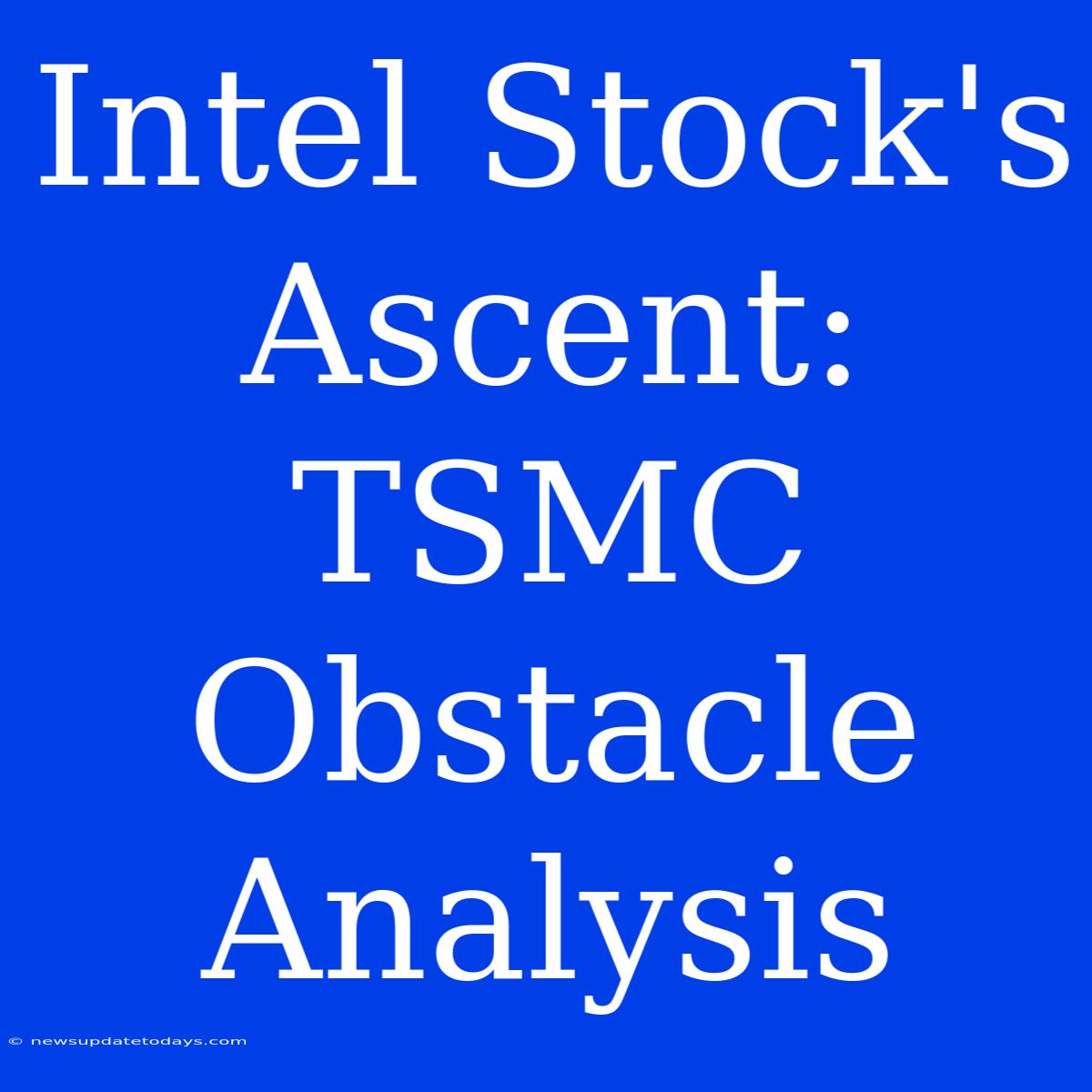Intel Stock's Ascent: Navigating the TSMC Obstacle
Intel's stock has seen a recent surge, fueled by optimism surrounding its IDM 2.0 strategy and advancements in its manufacturing process. However, the looming shadow of Taiwan Semiconductor Manufacturing Company (TSMC) presents a significant challenge to Intel's ambitions. This article delves into the factors driving Intel's stock price increase, while simultaneously analyzing the hurdles TSMC poses to its long-term success.
Intel's Resurgence: A Multi-Faceted Approach
Intel's recent positive momentum isn't solely based on hype. Several key factors contribute to the improved investor sentiment:
-
IDM 2.0 Strategy: Intel's integrated device manufacturing (IDM) 2.0 strategy, focusing on both internal chip production and external collaborations, has resonated well with investors. This approach aims to leverage Intel's manufacturing expertise while mitigating risks associated with sole reliance on internal production.
-
Manufacturing Process Improvements: Intel's progress in its manufacturing process technology, particularly with its 7nm and upcoming 3nm nodes, signals a commitment to technological leadership. While delays have occurred, demonstrating progress is crucial for regaining investor confidence.
-
New CEO Pat Gelsinger's Leadership: Pat Gelsinger's appointment as CEO brought a renewed sense of purpose and direction to Intel. His experience and clear vision have helped restore faith in the company's ability to execute its strategy effectively.
-
Growing Demand for Chips: The ongoing global chip shortage continues to benefit major players like Intel, ensuring strong demand for their products.
The TSMC Colossus: A Significant Headwind
Despite Intel's positive trajectory, TSMC remains a formidable competitor, presenting several challenges:
-
Established Market Leader: TSMC's decades-long experience and established market dominance provide it with significant advantages in terms of economies of scale, manufacturing expertise, and customer relationships. Overcoming this established position is a Herculean task.
-
Advanced Technology Node: TSMC consistently leads in pushing the boundaries of semiconductor manufacturing technology. Its advanced nodes are currently ahead of Intel's, potentially giving it a competitive edge in performance and power efficiency.
-
Capacity and Flexibility: TSMC boasts significantly larger production capacity and greater flexibility in serving a broad range of customers, offering a wider variety of chip designs and manufacturing processes.
Intel's Path Forward: A Balancing Act
For Intel to maintain its upward momentum and truly challenge TSMC, it needs to focus on several key areas:
-
Consistent Execution: Successfully delivering on its technological roadmap, including timely releases of its advanced process nodes, is paramount.
-
Strategic Partnerships: Leveraging external partnerships and collaborations effectively will be critical in supplementing Intel's internal capabilities and broadening its market reach.
-
Innovation in Design and Architecture: While manufacturing is crucial, Intel must continuously innovate in chip design and architecture to differentiate its products and offer compelling alternatives to TSMC’s offerings.
-
Addressing Cost Competitiveness: Intel must strive for cost-competitiveness against TSMC to effectively compete on price.
Conclusion: A Long Road Ahead
While Intel's recent stock performance is encouraging, the road to challenging TSMC's dominance is long and arduous. Success hinges on consistent execution of its strategy, overcoming technological hurdles, and establishing a strong competitive advantage. Only time will tell if Intel can truly navigate this challenging landscape and achieve sustainable long-term growth. Continuous monitoring of Intel’s progress in these key areas will be vital for investors to gauge the true potential of this ongoing turnaround story.

